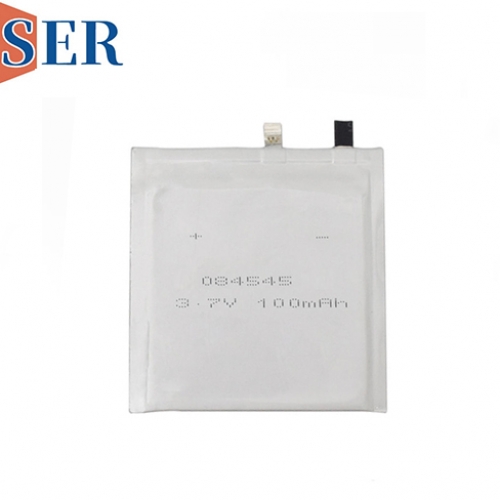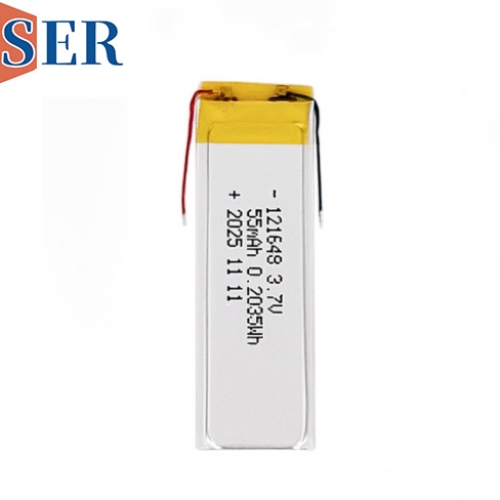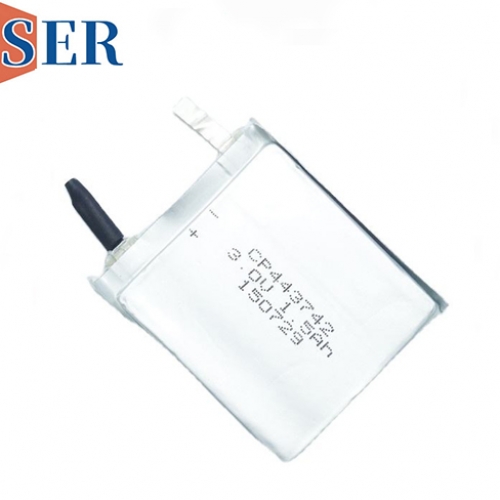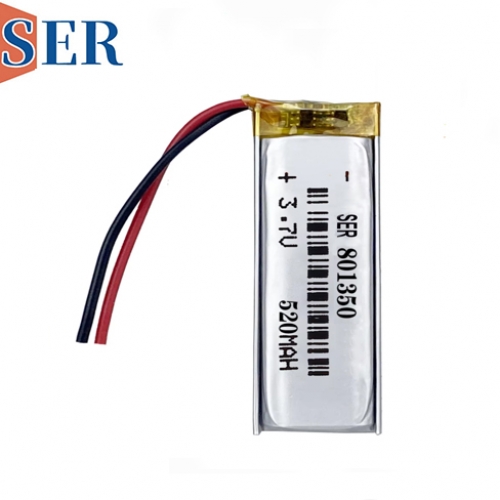CP502520 Thin Cell Battery : Ideal Choices for High-Current Applications After Long Periods of Inactivity
CP502520 Thin Cell Battery : Ideal Choices for High-Current Applications After Long Periods of Inactivity
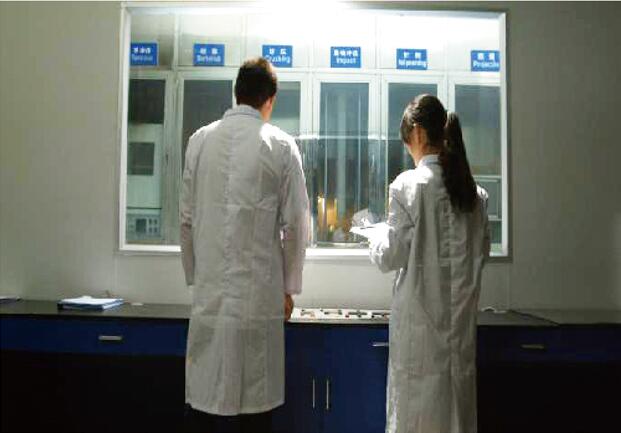
In the realm of battery technology, thin cell batteries and Lithium Manganese Dioxide (LiMnO2) cells have emerged as reliable and efficient solutions for various applications. This article delves into the specifics of the CP502520 thin cell battery and Lithium Manganese Dioxide cells, highlighting their unique features, benefits, and ideal use cases.
CP502520 Thin Cell Battery: The Epitome of Compact Energy Solutions
The CP502520 thin cell battery stands out in the market due to its innovative design and robust performance. These batteries offer a blend of efficiency, reliability, and convenience, making them the perfect choice for applications requiring high current after long periods of inactivity.
Soft Package Design
One of the most notable features of the CP502520 thin cell battery is its soft package design. Unlike traditional batteries with rigid casings, the soft package allows for greater flexibility and adaptability. This design makes the battery lightweight and easy to integrate into various devices, ensuring minimal impact on the overall size and weight of the product.
The soft package also enhances safety, as it provides better stress resistance and reduces the risk of battery leakage or rupture. This is particularly important for applications where the battery may be exposed to extreme conditions or physical stress.
Long Shelf Life
Another significant advantage of the CP502520 thin cell battery is its long shelf life. This battery can retain its charge for extended periods, making it ideal for devices that may not be used frequently but require reliable power when needed. The long shelf life is attributed to the battery's advanced chemistry and packaging, which minimize self-discharge and maintain optimal performance over time.
For example, in smart home devices, security systems, or medical implants that may only be activated occasionally, the CP502520 thin cell battery ensures that these devices are ready to perform when needed, without the need for frequent battery replacements.
Excellent Temperature Characteristics
Temperature fluctuations can significantly impact a battery's performance. However, the CP502520 thin cell battery is designed to withstand a wide range of temperatures, ensuring consistent and reliable power output. This makes it suitable for applications in extreme environments, such as outdoor electronics, industrial sensors, or military equipment.
The battery's excellent temperature characteristics are achieved through advanced materials and electrolyte formulations that maintain stable reactions across a broad temperature range. This ensures that the battery can deliver the required power, regardless of the ambient conditions.

Ease of Design Integration
The CP502520 thin cell battery's compact size and flexible packaging make it easy to integrate into various devices. Manufacturers can customize the battery's shape, size, and connectivity options to suit their specific needs. This design flexibility allows for seamless integration into even the most compact and complex electronic systems.
Moreover, the battery's thin profile enables it to fit into space-constrained applications, such as wearable devices, smart cards, and thin film electronics. This versatility makes the CP502520 thin cell battery an ideal choice for developers and engineers looking to optimize their product's performance and aesthetics.
Ideal for High-Current Applications
Despite its thin profile and compact size, the CP502520 thin cell battery is capable of delivering high currents. This feature makes it an excellent choice for applications that require bursts of power after long periods of inactivity. For instance, in electronic locks, RFID tags, and emergency locator beacons, the battery must provide reliable power on demand, even if it has been in storage for months or years.
The battery's ability to deliver high currents is achieved through its advanced electrode materials and optimized cell design. This ensures that the battery can provide the necessary power to activate the device quickly and efficiently, without compromising its long-term shelf life.
Lithium Manganese Dioxide (LiMnO2) Cells: Reliable Power for Critical Applications
Lithium Manganese Dioxide (LiMnO2) cells are another powerful option for applications requiring high current after long periods of inactivity. These batteries offer a combination of high energy density, excellent temperature characteristics, and long shelf life, making them suitable for a wide range of critical applications.
3.0V Primary Battery
LiMnO2 cells are primary batteries, meaning they are designed for single-use and cannot be recharged. They offer a nominal voltage of 3.0V, which is ideal for many electronic devices. This voltage level provides a balance between power output and energy efficiency, making LiMnO2 cells suitable for a wide range of applications.
The primary nature of LiMnO2 cells also means that they have a higher energy density than rechargeable batteries of the same size. This allows for longer operating times and reduces the need for frequent battery replacements, which can be beneficial in remote or hard-to-reach locations.
Excellent Temperature Characteristics
Similar to the CP502520 thin cell battery, LiMnO2 cells are designed to operate over a wide range of temperatures. This makes them suitable for applications in extreme environments, such as aerospace, military, and industrial settings.
The battery's temperature characteristics are achieved through a combination of advanced materials and careful cell design. The electrolyte and electrode materials are optimized to maintain stable reactions across a broad temperature range, ensuring consistent power output regardless of the ambient conditions.
Flat Discharge Curve
Another notable feature of LiMnO2 cells is their flat discharge curve. This means that the battery maintains a relatively constant voltage output as it discharges. This is beneficial for applications that require consistent power levels, such as sensors, meters, and other electronic devices that rely on precise voltage control.
The flat discharge curve is achieved through the battery's electrode materials and cell design. As the battery discharges, the reaction between the electrode materials progresses evenly, maintaining a stable voltage output. This ensures that the device receives consistent power, reducing the risk of malfunction or failure.
Hermetically Sealed Nickel-Plated Steel Container
LiMnO2 cells are enclosed in a hermetically sealed nickel-plated steel container. This packaging provides excellent protection against moisture, dust, and other contaminants, ensuring the battery's long-term reliability and performance.
The nickel-plated steel container also adds to the battery's durability and ruggedness. It can withstand physical stress and abuse, making the battery suitable for applications in harsh environments. This packaging ensures that the battery remains functional and reliable, even in extreme conditions.
Long Shelf Life
The hermetically sealed nickel-plated steel container, combined with the battery's advanced chemistry, contributes to LiMnO2 cells' long shelf life. These batteries can retain their charge for several years, making them ideal for applications that may not require frequent use but must be ready to perform on demand.
For example, in emergency locator beacons, smoke detectors, and other safety-critical devices, LiMnO2 cells ensure that the device is ready to activate when needed, without the need for frequent battery replacements. This reliability is crucial for applications where the consequences of battery failure could be severe.
Ideal for High-Current Applications
Despite their compact size and primary nature, LiMnO2 cells are capable of delivering high currents. This makes them an excellent choice for applications that require bursts of power after long periods of inactivity. For instance, in medical implants, electronic locks, and RFID tags, the battery must provide reliable power on demand, even if it has been in storage for an extended period.
The battery's ability to deliver high currents is achieved through its optimized electrode materials and cell design. This ensures that the battery can provide the necessary power to activate the device quickly and efficiently, without compromising its long-term shelf life.
Comparison and Use Cases
Both the CP502520 thin cell battery and LiMnO2 cells offer unique advantages, making them suitable for different applications. Understanding their specific benefits and limitations can help engineers and developers choose the right battery for their needs.
Compact Size and Flexibility
The CP502520 thin cell battery excels in applications where space is limited. Its thin profile and flexible packaging make it easy to integrate into compact devices, such as wearable technology, smart cards, and thin film electronics.
In contrast, LiMnO2 cells may be too bulky for some space-constrained applications. However, their higher energy density and long shelf life make them ideal for devices that require reliable power over an extended period, such as sensors, meters, and other industrial equipment.
High-Current Delivery
Both batteries are capable of delivering high currents, making them suitable for applications that require bursts of power after long periods of inactivity. However, the specific design and materials of each battery may affect their performance in high-current applications.
For instance, the CP502520 thin cell battery's optimized electrode materials and cell design may provide better high-current delivery performance in some applications. In contrast, LiMnO2 cells may offer longer operating times and higher energy density in other applications.
Temperature Range and Durability
Both batteries offer excellent temperature characteristics, making them suitable for applications in extreme environments. However, the hermetically sealed nickel-plated steel container of LiMnO2 cells provides additional protection against contaminants and physical abuse

